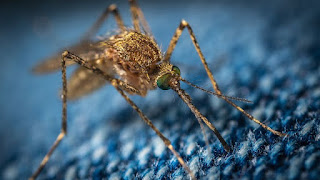Mosquitoes are known for transmitting deadly diseases like malaria, dengue fever, and West Nile virus. Despite several mosquito control measures like nets and pesticides, the development of better repellents to sabotage odorant attraction remains a priority.
Mosquitoes detect odors mostly through their antennae, and scientists have long observed that variations in odors, heat, humidity, and carbon dioxide are factors in attracting mosquitoes to some individuals more than others.
In a recent study published in Cell Reports, Christopher Potter, Ph.D., and his team of postdoctoral researchers at Johns Hopkins University School of Medicine have identified specialized receptors on mosquito neurons that help them detect "welcoming" odors in human skin. Understanding the molecular biology of mosquito odor-sensing is key to developing new ways to avoid bites and the burdensome diseases they cause.
Receptors on mosquito neurons play a vital role in identifying people who present an attractive source of blood meal. Anopheles gambiae, a family of mosquitoes that cause malaria, for example, has three types of receptors that detect odor: odorant, gustatory, and ionotropic receptors. Odorant receptors help mosquitoes distinguish between animals and humans, gustatory receptors detect carbon dioxide, and ionotropic receptors respond to acids and amines, compounds found on human skin. Potter and his team focused on ionotropic receptors to find why some people are more attractive to mosquitoes than others.
Using fluorescent in situ hybridization, a technique that pinpoints genetic material called RNA, the researchers found RNA linked to ionotropic receptors in the segmented tube-like antennae of 10 female and 10 male mosquitoes. The majority of ionotropic receptors were found in the distal part of the antennae, farthest from the head. The researchers also identified some pairings of receptors that predicted if an ionotropic receptor would respond to acids or amines. They verified these predictions by using genetic engineering to visualize the responses of an ionotropic receptor called Ir41c in the mosquito. Ir41c-expressing neurons were activated by one type of amine as predicted but were inhibited by a different type of amine.
Potter suspects that ionotropic receptor-expressing neurons' ability to be both activated and inhibited by odors may allow mosquitoes to increase the range of responses ionotropic receptors can play in odor detection and in driving behaviors. Future studies will focus on identifying the specific ionotropic receptors that cause mosquitoes to be attracted to human odors. This study highlights the complexity of mosquito antennae and how a better understanding of their sense of smell can lead to new ways of repelling mosquitoes and preventing deadly diseases.








0 Comments